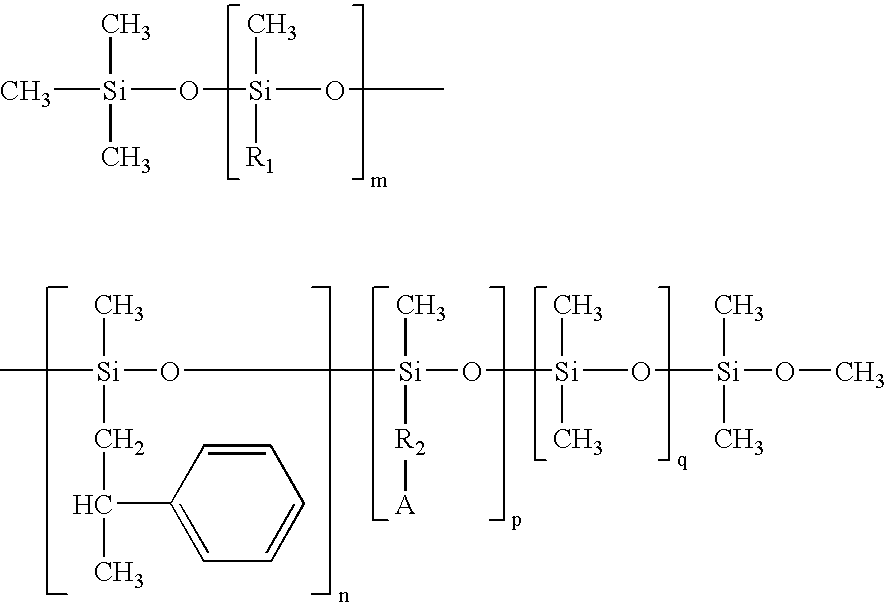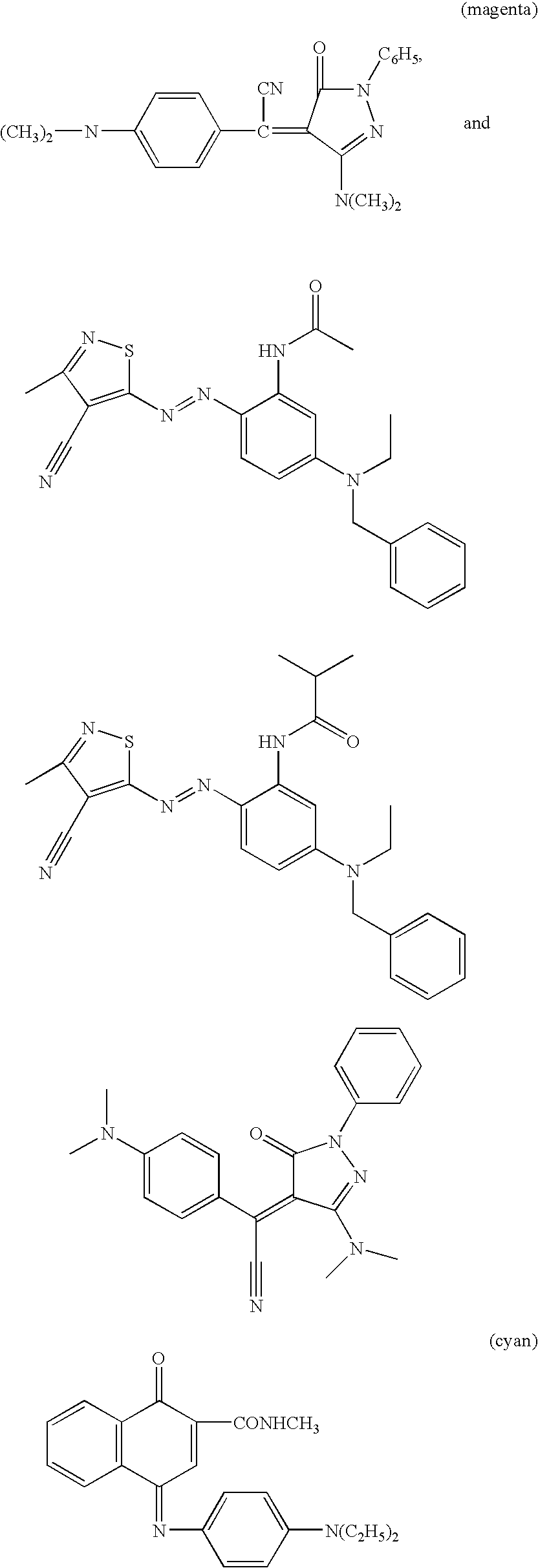Thermal print assembly
a technology of thermal dye and print assembly, applied in the direction of printing, duplicating/marking methods, coatings, etc., can solve the problems of thermal dye-donor elements and receiver elements used in thermal dye transfer systems, sticking and tearing of elements upon separation, rendering the receiver element useless, etc., to achieve good quality image or reduce the effect of
- Summary
- Abstract
- Description
- Claims
- Application Information
AI Technical Summary
Benefits of technology
Problems solved by technology
Method used
Image
Examples
example
A thermal print assembly was constructed form a receiver element and dye-donor element. The materials and methods are set forth below.
As used herein, MB50-315 is a commercially available 50:50 blend of bisphenol-A polycarbonate and ultrahigh MW polydimethyl siloxane from Dow Chemical Co., GP-70-S is a methylalkylaryl silicone from Genesee Polymers Corp., H3PO3 is phosphorous acid, PES is a polyester derived from 1,4-cyclohexanedicarboxylic acid, 1,4-cyclohexanedimethanol, 4,4′-bis(2-hydroxyethyl)bisphenol-A, and 2-ethyl-2-(hydroxymethyl)-1,3-propanediol, PC is bisphenol A polycarbonate, known as GE Lexan 151, obtained from General Electric Co; and DOS is dioctyl sebacate.
Receiver Element:
The receiver element was made as follows using the compositions of Table 1, wherein all compounds set forth in Table 1 are in percent by weight of the dye image-receiving layer:
TABLE 1MB50-Sample315GP-70SPESPCDOSH3PO3DRL-13—73.4618.195.330.02DRL-230.872.818.055.330.02DRL-331.272.5117.945.33...
example e-1
includes a stick preventative agent in both the dye-donor layer and the dye image-receiving layer. As compared to Example C-4, Example E-1 has less stick preventative agent in the dye image-receiving layer, producing acceptable results with regard to both toe and donor-receiver sticking.
As seen from the examples, a combination of a stick preventative agent in a dye-donor layer with a stick preventative agent in a dye image-receiving layer provides a synergistic effect in overcoming donor-receiver sticking, while minimizing the amount of stick preventative agent needed in one or both of the dye-donor layer and the dye image-receiving layer.
PUM
| Property | Measurement | Unit |
|---|---|---|
| weight | aaaaa | aaaaa |
| total weight | aaaaa | aaaaa |
| print speeds | aaaaa | aaaaa |
Abstract
Description
Claims
Application Information
 Login to View More
Login to View More - R&D
- Intellectual Property
- Life Sciences
- Materials
- Tech Scout
- Unparalleled Data Quality
- Higher Quality Content
- 60% Fewer Hallucinations
Browse by: Latest US Patents, China's latest patents, Technical Efficacy Thesaurus, Application Domain, Technology Topic, Popular Technical Reports.
© 2025 PatSnap. All rights reserved.Legal|Privacy policy|Modern Slavery Act Transparency Statement|Sitemap|About US| Contact US: help@patsnap.com



